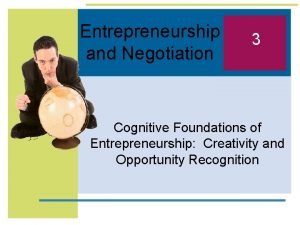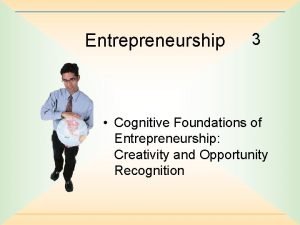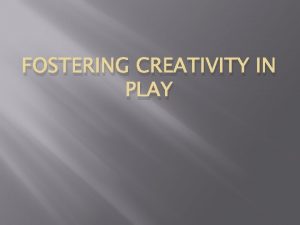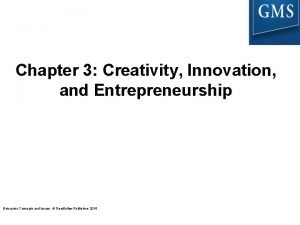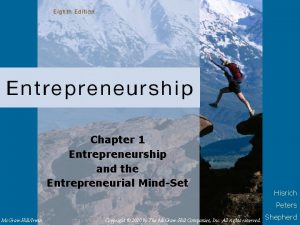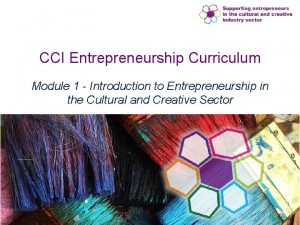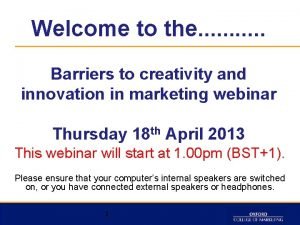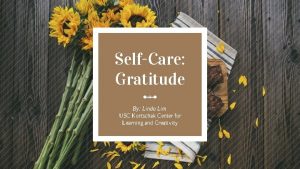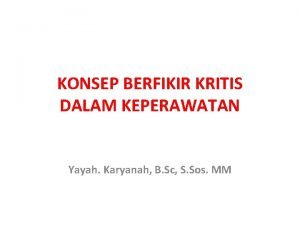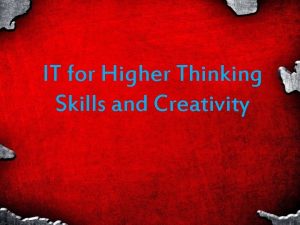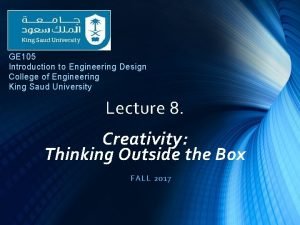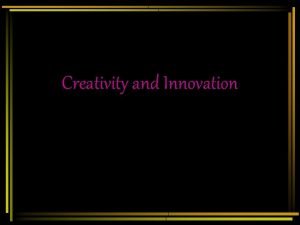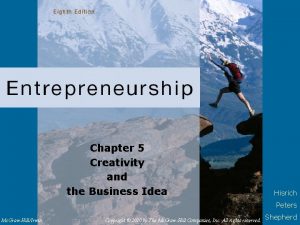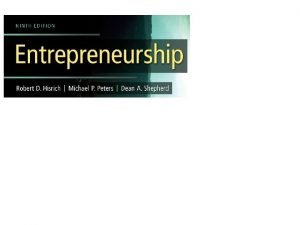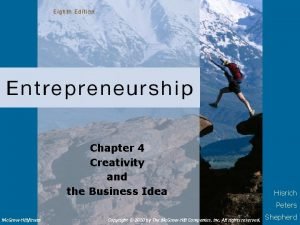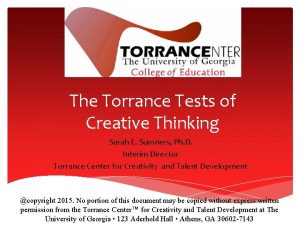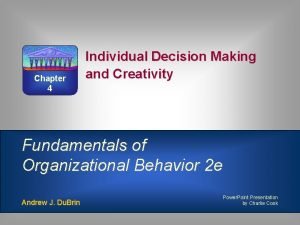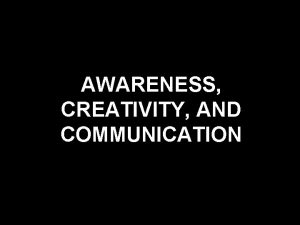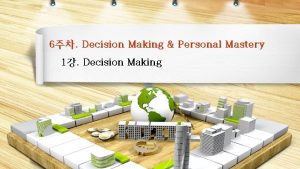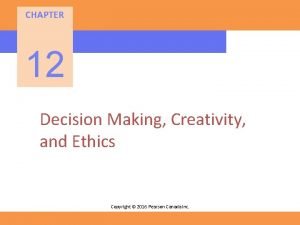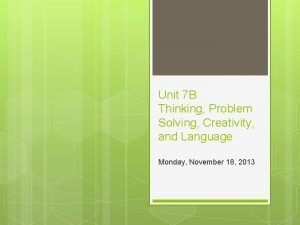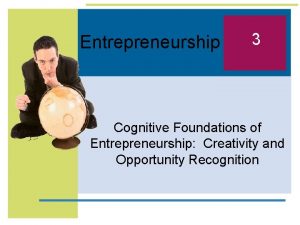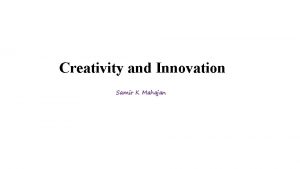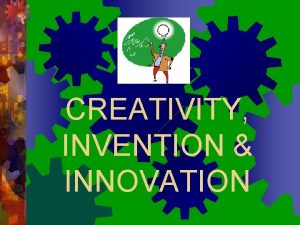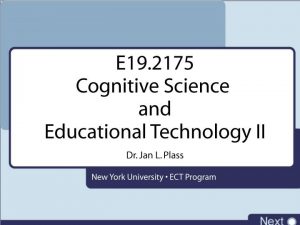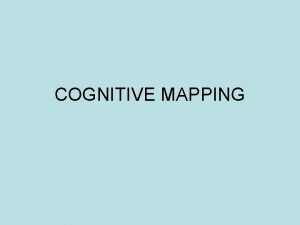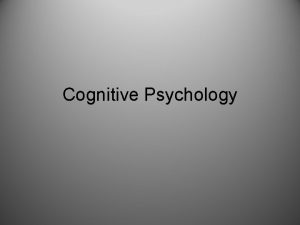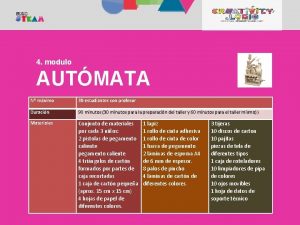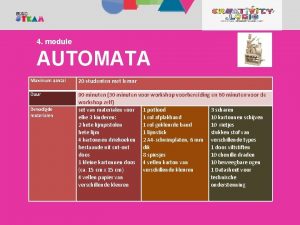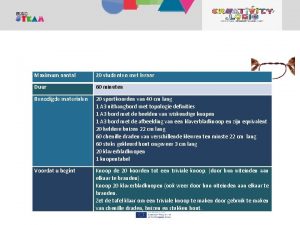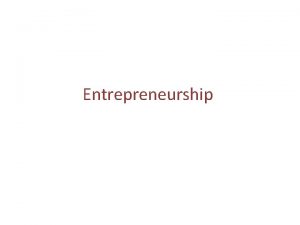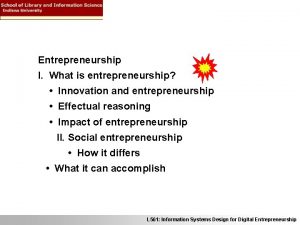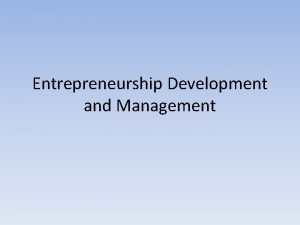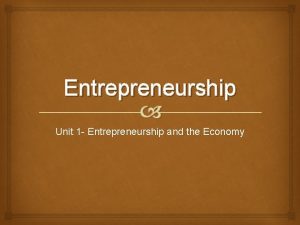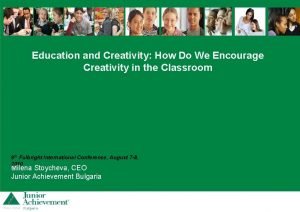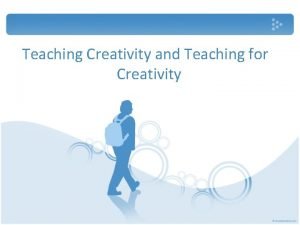Entrepreneurship 3 Cognitive Foundations of Entrepreneurship Creativity and






















- Slides: 22

Entrepreneurship 3 • Cognitive Foundations of Entrepreneurship: Creativity and Opportunity Recognition

“People think that at the top, there isn’t much room. They tend to think of it as an Everest. My message is that there is tons of room at the top. ” --Margaret Thatcher 3 -2

Three Key Processes Idea Generation Creativity Opportunity Recognition Increasing Relevance to Founding Venture 3 -3

Memory • Working memory—holds limited amount of information fro brief periods • Long-term memory—retains vast amounts of information for long periods • Procedural memory—automatic knowledge gained through practice 3 -4

Mental Frameworks Mental frameworks help us to interpret new information and relate it to information we already possess. 3 -5

Prototypes Idealized mental representations of the most typical member of a category. 3 -6

Mental Shortcuts • Heuristics—simple rules for making complex decisions or drawing inferences in a rapid and seemingly effortless manner • Availability heuristic—the more easily we bring information to mind, the more importance we assign to it 3 -7

Thinking “Tilts” • Optimistic bias—expect things to turn out well without basis • Confirmation bias—notice, process, and remember information that confirms current beliefs • Illusion of control—assume that our fate is under our control 3 -8

Creativity Items or ideas produced are both • New (original, unexpected) • Useful or appropriate 3 -9

Concepts • Building blocks of creativity • Internal mental structures developed to organize information • Categories for objects or events that are somehow similar to each other in certain respects 3 -10

Escaping Mental Ruts Concepts can be stretched in several different ways • Combination • Expansion • Analogy 3 -11

“An old thing becomes new if you detach it from what usually surrounds it. ” --Robert Bresson 3 -12

Human Intelligence Individuals’ abilities to • Understand complex ideas • Adapt effectively to the world • Learn from experience • Engage in various forms of reasoning • Overcome a wide range of obstacles 3 -13

Kinds of Intelligence • • • Analytic intelligence Creative intelligence Practical intelligence Social intelligence Successful intelligence 3 -14

Successful Intelligence Practical Intelligence Analytic Intelligence Successful Intelligence Success Creative Intelligence 3 -15

Confluence Approach • • • Creativity emerges from a confluence of Intellectual abilities Broad, rich knowledge base Appropriate style of thinking Personality attributes Intrinsic, task-focused motivation Environment supportive of creative ideas 3 -16

Broad, Rich Knowledge Base • Having varied work experience • Having lived in many different places • Having a broad social network 3 -17

Opportunity Recognition Some people are more likely to recognize opportunities because • They have better access to certain kinds of information • They are able to utilize the information once they have it 3 -18

Superior Utilization of Information • Richer and better-integrated stores of knowledge • Higher in intelligence • Higher in practical intelligence • Higher in creativity 3 -19

Additional Aspects Active search Entrepreneurial alertness Prior knowledge Opportunity recognition Social networks 3 -20

Pattern Recognition • Seeing links between seemingly unconnected trends, changes, events • Connections form an identifiable pattern 3 -21

Enhancing Opportunity Recognition • Exposure to broad range of business experience • Learning to search in the best places • Learning to search in the best ways • Exposure to a broad range of business opportunities 3 -22
 Cognitive foundations of entrepreneurship
Cognitive foundations of entrepreneurship Cognitive foundations of entrepreneurship
Cognitive foundations of entrepreneurship Creativity and play fostering creativity
Creativity and play fostering creativity Creativity innovation and invention
Creativity innovation and invention Cognitive and non cognitive religious language
Cognitive and non cognitive religious language Cognitive adaptability in entrepreneurship examples
Cognitive adaptability in entrepreneurship examples Introduction to entrepreneurship module pdf
Introduction to entrepreneurship module pdf Barriers to creativity and innovation
Barriers to creativity and innovation Usc kortschak center for learning and creativity
Usc kortschak center for learning and creativity Elemen berpikir kritis antara lain kecuali
Elemen berpikir kritis antara lain kecuali Guided hypermedia projects
Guided hypermedia projects Creativity innovation and invention
Creativity innovation and invention Creativity innovation and invention
Creativity innovation and invention Pritchon is a business idea sourced from
Pritchon is a business idea sourced from Chapter 4 creativity and the business idea
Chapter 4 creativity and the business idea Barriers to creativity
Barriers to creativity Torrance creativity test examples
Torrance creativity test examples Decision making and creativity organizational behavior
Decision making and creativity organizational behavior Awareness creativity and communication
Awareness creativity and communication Creativity and personal mastery
Creativity and personal mastery Creativity and innovation
Creativity and innovation Ethics and creativity are ________.
Ethics and creativity are ________. Problem solving and creativity
Problem solving and creativity
